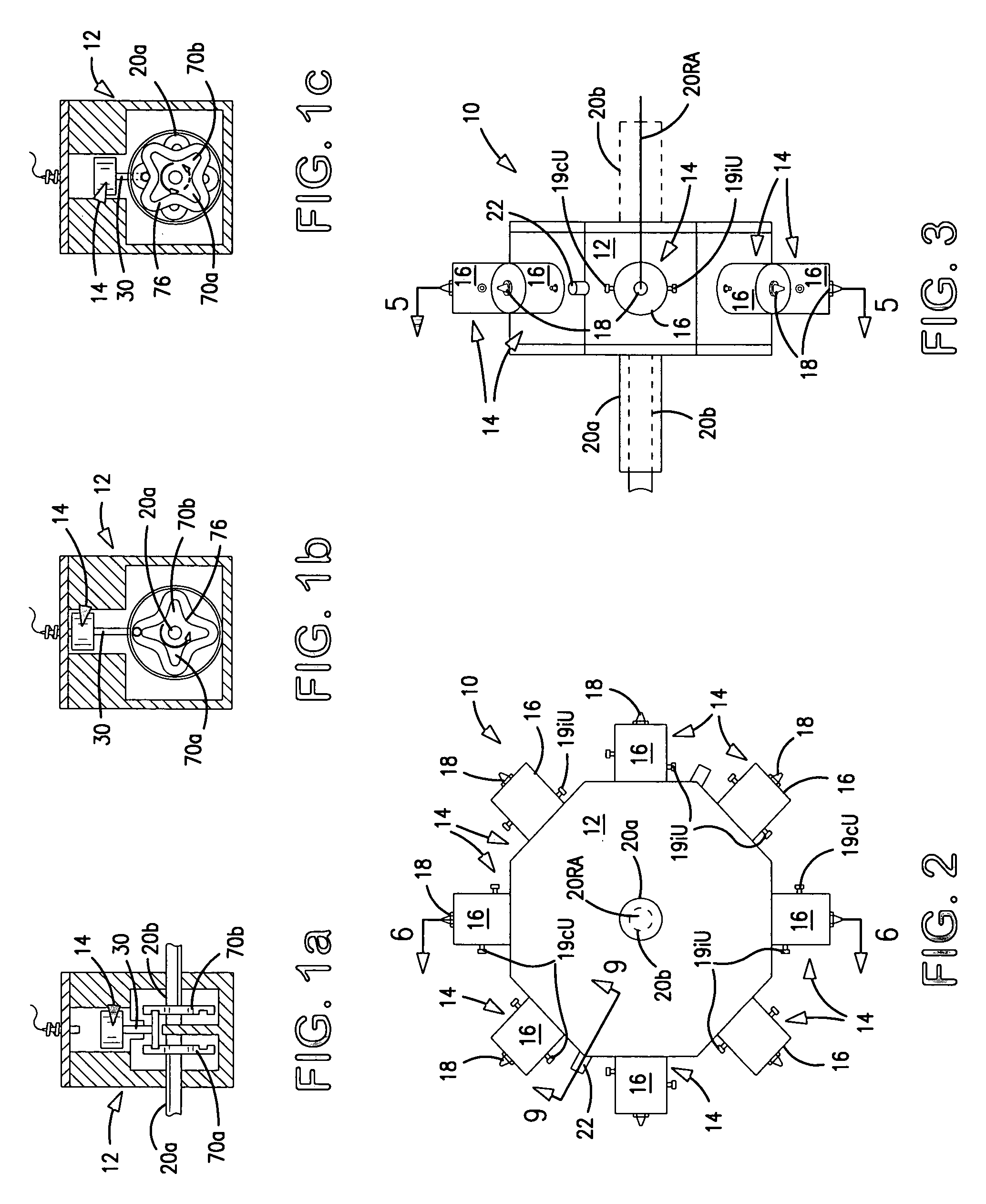High torque, low velocity, internal combustion engine
a technology of internal combustion engine and high torque, applied in the direction of positive displacement engine, combustion engine, gearing, etc., can solve the problems of limiting its application, compromising the design of many engines, and limiting the application of four stroke engines, so as to achieve high torque output and reduce or eliminate.
- Summary
- Abstract
- Description
- Claims
- Application Information
AI Technical Summary
Benefits of technology
Problems solved by technology
Method used
Image
Examples
Embodiment Construction
[0048]The present invention relates to a new and useful cam driven Internal Combustion Engine (ICE) that delivers high torque at low rotational velocity. The preferred embodiment is described in the context of eight reciprocating pistons acting on two internal rotating drive cams that, in turn, drive coaxial output shafts. It will be appreciated, however, that the inventive features of the invention may be applied to similar internal combustion engines having fewer or a greater number of reciprocating pistons, to those having more than two cam drives, to those wherein the drive cams rotate in the same or opposite rotational directions, or to those having a single output drive shaft.
[0049]Before discussing the internal details and specific embodiments of the invention, it is useful to obtain a broad overview of the invention by referring to the schematics shown in FIGS. 1a, 1b, 1c. In the broadest sense of the invention, the ICE comprises a housing 12 which supports: a reciprocating ...
PUM
 Login to View More
Login to View More Abstract
Description
Claims
Application Information
 Login to View More
Login to View More - R&D
- Intellectual Property
- Life Sciences
- Materials
- Tech Scout
- Unparalleled Data Quality
- Higher Quality Content
- 60% Fewer Hallucinations
Browse by: Latest US Patents, China's latest patents, Technical Efficacy Thesaurus, Application Domain, Technology Topic, Popular Technical Reports.
© 2025 PatSnap. All rights reserved.Legal|Privacy policy|Modern Slavery Act Transparency Statement|Sitemap|About US| Contact US: help@patsnap.com



